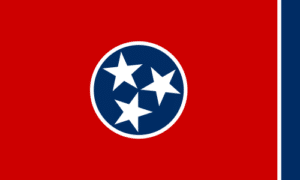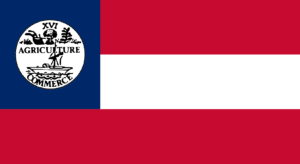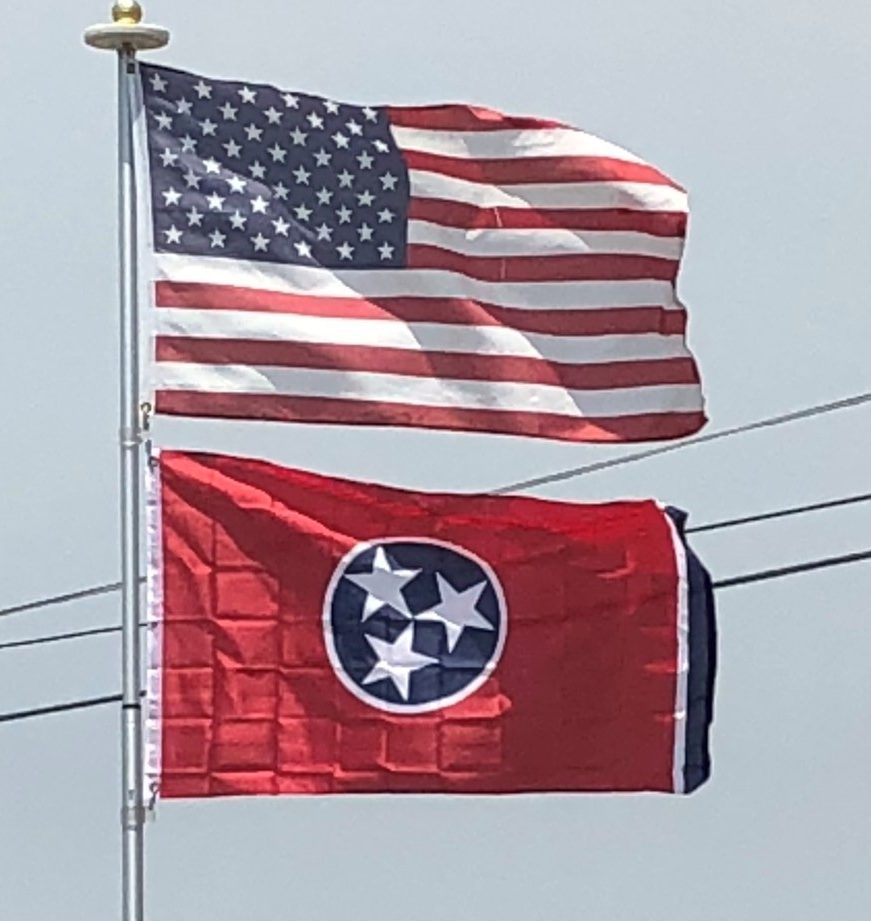The three stars represent the three Grand Divisions of the state, East Tennessee, Middle Tennessee, and West Tennessee. The blue circle around the stars represents the unity of the “Grand Divisions” of the state. The blue bar at the edge of the flag was just a design consideration. When asked about the blue bar, Reeves stated that “The final blue bar relieves the sameness of the crimson field and prevents the flag from showing too much crimson when hanging limp.”

The flag was designed by Colonel LeRoy Reeves of the Tennessee National Guard, a Johnson City attorney who was serving in the Tennessee National Guard in 1905 when he created the new flag design.
The Tennessee State Legislature officially adopted the flag on April 17, 1905.
Prior to the adoption of the current flag, the state of Tennessee used a tricolor in red, blue, and white.

The three bands were slanted to represent geographically the three regions of Tennessee. It included the number 16 and the words “The Volunteer State”, representing Tennessee being the 16th state in the Union, and the state’s nickname.
During the early days of the Civil War a state flag was proposed but never adopted.

The State Nickname – The Volunteer State:
Tennessee has had several nicknames, but the most popular and well-known is “The Volunteer State,” a nickname earned during the War of 1812 when thousands of volunteer soldiers from Tennessee played a prominent role in this war, especially during the Battle of New Orleans. This reputation for volunteering was reinforced during the Mexican War when the secretary of state asked for 2,800 Tennessee volunteers and got 30,000 respondents.
